
views
Getting Started
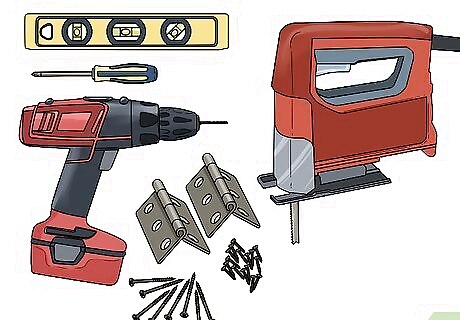
Get the tools and materials necessary to the job. Aside from a fence in need of a gate, you'll need a few common hand-held carpentry tools to get started making your gate. It's likely you'll need: Screwdriver Power drill Compound miter saw Carpenter's level Jigsaw, for cutting a decorative profile 3-inch stainless steel coated deck screws, for putting the box frame together 1 ¼ or 1 ⅝ stainless steel or coated deck screws, for planking Hinges
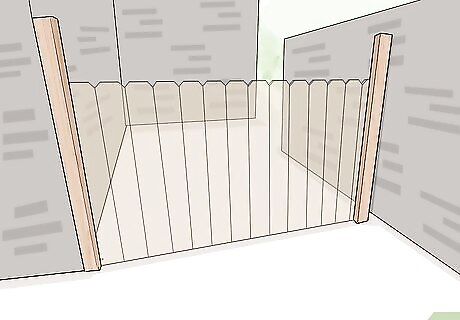
Make sure the fence posts can support a gate if you already have a fence. The size of the gate should not be greater than 4' (1.22 m) in width. If it is wider, you must make and hang two gates, which will meet in the middle. Measure the entry at the top and bottom as they can easily be different. Build the gate to be square based on the narrower measure. Take diagonal measurements to check for squareness.
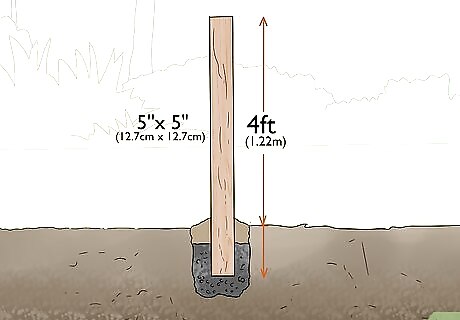
Anchor and plumb the fence posts, if necessary. You need to make sure that hanging the gate won't pull the posts to one side. The way you anchor the post will depend on the size of the fence, but in general, you need to make sure the post doesn't wiggle with weight. If it can be easily moved, the gate will sag. You should also check and see that the post is level, straight up and down. Ideally, a 4-foot (1.22 m) tall gate needs a 5" x 5" (12.7cm x 12.7 cm) redwood post. A 6-foot (1.83 m) tall gate requires a 6" x 6" (15.3 cm x 15.3 m) post. Post length should be at least 1/3rd longer than the planned height of gate. The hole that the post will occupy should be at least 6” deeper than post will be buried. Post should be buried at least 1/3 but preferably 1/2 of its length and hole should be 3 x as wide as post. Concrete is best for filling hole but gravel or tightly packed earth may have to do. It is best to seal the end of post being buried using old motor oil, water proofing agent, bronzing (lightly charring post) or exterior paint. Giving buried end of post some form of water proofing protection will greatly extend life of post. Post should also be (proved) before using. Proving is allowing post to lay exposed to elements for at least 4 or more days to assure that it won't warp or twist (the longer the better, 2 weeks is best). This is especially important for 'treated' posts that have been bundled (unbundle, separate posts and allow to dry and wait to see if they will remain straight -proving). One doesn't want to come back and find that a post has warped after a week or so.
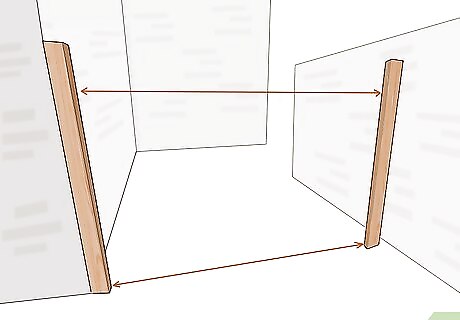
Measure the frame. The frame for a basic wooden fence gate should be a simple box with 4 sides, usually somewhat smaller than the gate opening. If you've got a 3x5 opening in the fence, build a 3x4 box out of a weather resistant wood. The box should be about an inch less wide than the rough opening to account for hinges and the thickness of gate as it swings. Typically, you'll want to use the same variety of wood used on the fence. If you want a different color, redwood is sometimes used for large gates. Whatever you choose to use, buy more lumber than you'll need to make sure you've got enough for the job.
Building the Gate
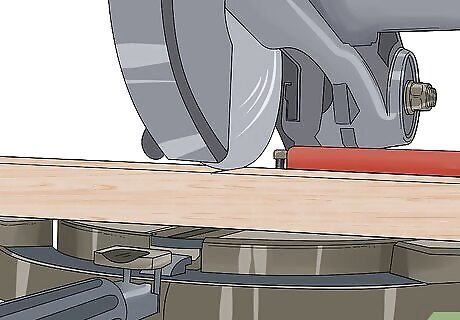
Cut 2 x 4 (5.08 x 10.16 cm) frame pieces to size with a mitre saw. Start the gate by cutting the top and bottom pieces to the same width/length as you planned for, slightly smaller than the opening in the fence. Cut the upright side planks about 3 inches shorter than the height of the gate.
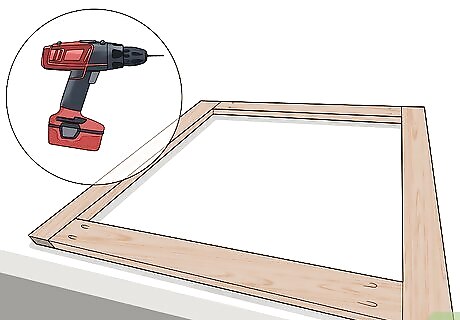
Screw in the top and bottom planks. Drill a pilot hole for the screws before putting them in so that they do not split the wood. Fasten with deck screws, pre-drilling to keep the wood from splitting. Measure from the top bend to the opposite bottom corner. Both sides should measure the same. Typically, as you start assembling, the gate framing, it's good to lay it out on a flat surface, such as a patio or driveway. Attach the top and bottom rails to the side rails, making sure it is square.
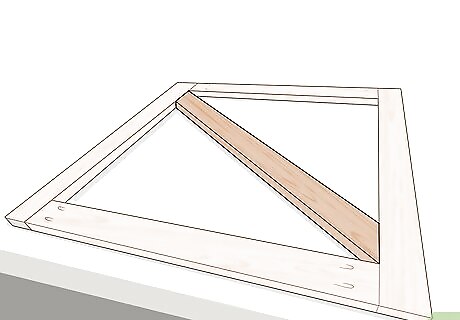
Cut an angled cross-brace and attach it to the top and bottom rails. This helps maintain strength and rigidity. Connect these to the frame boards that match the rest of the fence by using deck screws, pre-drilling as before. Make your diagonal cut with a mitre saw. Place the diagonal onto the box and trance with a pencil where the angles go. Place the cross-brace at a 45 degree angle extending from the bottom corner of the gate to the opposite corner of the top of the gate.
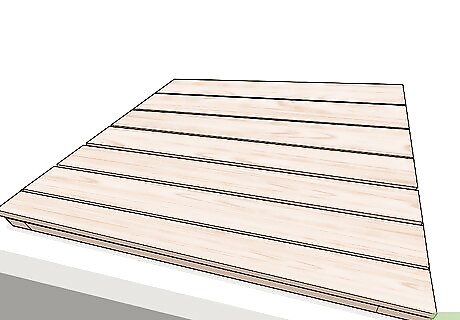
Cut and install the planks. Once you've designed the frame and built it, all you need to do now is attach flat planks evenly over the front of the frame to finish your basic wooden gate. Measure planks from the top to the bottom of the frame and cut them accordingly. Leave at least ⅛ inch between the planks for weather allowances. Cut planks using a table saw and secure them using deck screws, drilling pilot holes to keep your planks nice and clean.
Finishing the Gate

Design the top of the gate. Most people like to take a little time to design the top of the gate and add a little decoration to it, using a jigsaw. If you don't want to take the time to, it's not necessary, but it's a good way to make the fence look nice. Generally, a beveled edge, an imprint of your last name, or other little decorative markers are popular. To start, draw an arc across the top of the fence using a string and a pencil, filling it with decorative curves according to your taste. If you're a woodworker, feel free to get fancy with it. Use the jig to cut along your pattern.
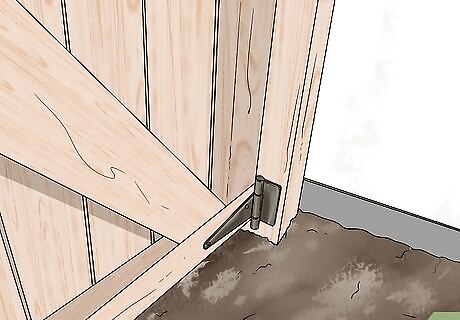
Install hinges and attach the gate to the fence. Put the gate into place, supporting it on the bottom with a 2x4 (1.5 inch off ground). Use a pencil to mark where the hinge should go on the post, and then put the gate down. Predrill where the screws will go. Prop up the gate and screw the hinges into the gate and attach the hinges to the post.
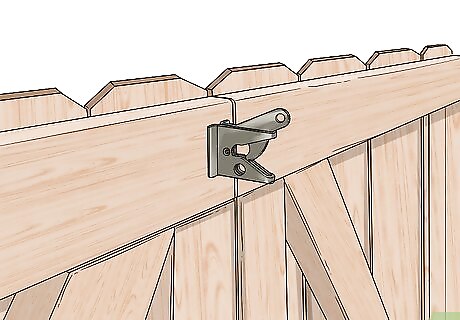
Install a gravity latch. Most easy-to-use fences will use a gravity latch, which you can install after you've hung the fence. Mark where the screws will go with a pencil, then drill pilot holes and install the latch. Get the fit first before you put any finish on the gate.
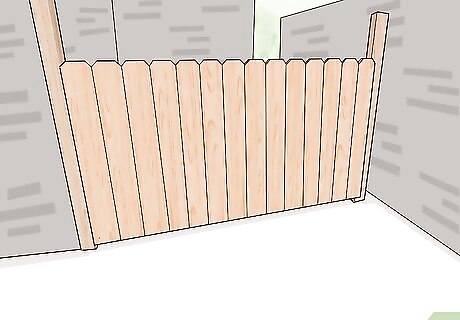
Seal the wood. Try to hit every exposed surface with your sealer, using a paintbrush or garden sprayer to apply. Most home retailers sell pads that are basically a sponge on a stick that you can use to spread it around, if necessary. Try to cover the whole surface evenly, making sure you hit the bottoms of the planks, which tend to absorb more water than the face grains. This is the area most likely to rot or become discolored. Let dry for a couple hours in dry climates or a day in more humid climates.
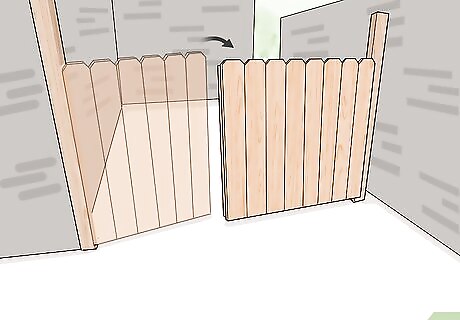
Use your gate. After you finish sealing the wood and have given it plenty of time to dry, your gate is ready to use! Open and close it to test it out.




















Comments
0 comment